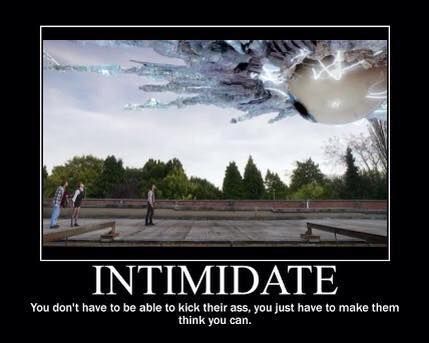There are a small set of skills that tend to recur in almost every game, as they represent common tactics and approaches that players use in games.
One of them is intimidation – representing under various names (coercion, threats, etc), the skill of being able to get others to do what you want through threats or power.
While most skills comfortably sit in one of the various categories of characteristics (acrobatics type skills all fall under some variant of Dexterity/Agility and knowledge skills are found under Intelligence or its equivalent), intimidation is one that falls under many different characteristics.
For example:
D&D 5e Charisma
Savage Worlds Spirit
Legend of 5 Rings Willpower
Warhammer 3e Strength
Star Wars (d6) Knowledge
By way of contrast, it’s hard to find some form of persuasion/charm under anything but a social type characteristic, such as Charisma, Fellowship, Presence or such.
What makes intimidation so different?
Different Approaches?
One possible answer is that there are many ways to force someone to do what we want. We could use force of personality (Spirit or Charisma), force of will (Willpower), sheer muscle mass (Strength) or techniques of intimidation (Knowledge), resulting in the differences.
This isn’t entirely a satisfying answer since you could use the same argument with charm – strength of personality, knowledge of how to entice others, physical attractiveness or techniques of manipulation could shift that skill to a variety of different techniques.
Design Philosophy?
It could be taken as a sign of the game designer’s approach to the game world – perhaps in Warhammer designers are signalling that might makes right; maybe in Star Wars there’s the opposite view of knowledge is true power; it could be that in D&D and Savage Worlds social abilities of any kind are ruled by Charisma/Spirit to give an undervalued characteristic extra utility; while in LO5R designers reflect a world where the strongest willpower will triumph over the weaker minds?
These are just guesses, but if this is the answer then we would guess that other skills would follow this pattern. But, as stated earlier, usually other skills are fairly uniform in the type of characteristic they fall under – why again is intimidation so different?
Making Other People Do What You Want Is Hard?
It seems to me that a combination of the above two factors is most likely, but mixed in with the fact that forcing other people to do what we want them to do (the essence of intimidation) is, in real life, hard to do.
One of the most important lessons in life is that you only have control over yourself, not other people. The use of intimidation to get your way in games is really wish fulfillment and different people have their own ideas how it should or “is” done, which leads to different approaches and different game theories coming together to push intimidation in the different directions that we see in games.
It’s a curious skill that warrants a second look for all game designers – what are you saying about your game world? How, if at all, do people in your game world attempt to force others to do their will?





One solution that I’m surprised to never see is letting characters use different traits depending on the situation/what they are doing. I think L5R recommends doing that in certain situations, but it’s pretty easy to implement in most games with attributes and skills.
For example, implying the destruction of everything one loves might be intimidate based on charisma. However, if you smash a barrel with your fists in a rage, that’d probably be intimidate based on strength.
That is used in a few games that I have seen, but I’ve also seen that when the player chooses which trait applies, it seems more often than not, it’s their highest trait, used over and over again.
It is something I have seen done and like a lot, the player describes how he chooses to intimidate/haggle/barter/seduce/etc… and the GM decides which Attribute applies, ignoring what the system dictates for the skill. I could intimidate with charisma by displaying a sadistic and depraved demeanor or I could use strength by inflicting pain or int by applicastion of NLP….I can seduce purely with appearances of my Attractiveness, use my charms and Charisma or apply Intelligence and a carefully measured dose of aphrodisiacs…..etc…
Similarly, knowledge checks usually involve any skill paired with Int or educated knowledge or Wis for knowledge from personal experience, e.g. short swords skill with Int instead of Str to check the quality of the weapon.